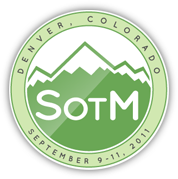Quantifying the impact of land use on the nitrogen cycle
Better knowledge of the impacts of large scale land use on water quality are needed to act on urbanism and country planning at the scale of a global watershed, as outlined in the European Water and Wetlands law.
Nitrogen is one of the most important pollutants in surface waters and comes from different sources. In this study, remote sensing techniques and Geographical Information Systems have been used successfully to monitor and quantify the sources of Nitrogen on the scale of a global watershed.
The surface water selected for the present study is a French River –the Durance- and its surroundings, located in the South-East of France and running through Provence from the Alps to the Rhône River. The watershed area is 14 000 km2 and covers very different landscapes from high mountains to Mediterranean forests, and encounters various human activities.
Data have been extracted from two main databases: i) the archive database provided by the USGS which gives us open access to 25 years of Landsat-5 data, ii) A French database reporting analyses of water quality (SANDRE), available from the French Water Agency web portal, which allows us to freely access 40 years’ data.
A supervised classification was applied on the satellite imagery to produce land use maps with a better accuracy than the Corine Landcover datas. The sub-watershed of each sampling station was computed using its geographical location and the ASTER Digital Elevation Model, this allows the calculation of land use statistics for each sub-watershed.
In the SANDRE database, total nitrogen is available as the sum of Kjeldahl nitrogen, ammonium, nitrates and nitrites. The concentrations of the different species of nitrogen were averaged by sampling station and year.
Our null hypothesis is that water quality is dependent on land use. A single linear model was applied using land use statistics as an explanatory variable dependent on the concentrations of the different species of nitrogen. The results show a strong relationship between land use and nitrogen concentration (global p-value over 0.98), but this is not the case for all the parameters: nitrates are highly correlated to agriculture but less to forest, and nitrites did not really depend on land use (p-value = 0.29).
This simple statistical model shows an opportunity to quantify the origin of nonpoint source pollution and to adapt country planning recommendations for each watershed area.
I am a phD student at the University of Provence (France), working at the research centre for the conservation of Mediterranean wetlands, the Tour du valat, located in the Camargue (France)











